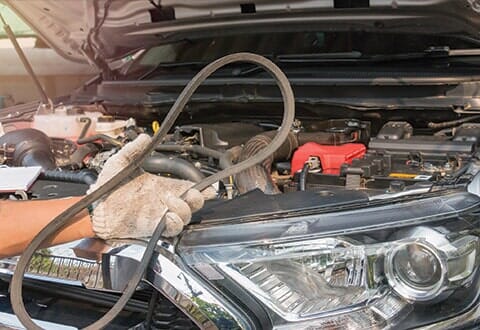There are 2 types of engines you will hear about when the discussion of broken timing belts arise, “Interference” and “Non-Interference”. These terms refer to the relationship between the pistons and valves when the camshaft and crankshaft are out of synchronization.
- Non-interference: When the timing belt breaks the valves and pistons will not come into contact with one another and you can merely replace the belt and all should be OK
- Interference engine: This is another matter. If the belt breaks, the pistons will hit the valves, bending them and causing major engine damage. At the very least the cylinder head will need to be removed and the valves replaces, in extreme cases the piston may be damaged and the engine may need replacement
In addition, because the timing belt is made from rubber and reinforced with fiber cords, it naturally degrades over time. It should be replaced at scheduled intervals, which vary among car manufacturers, but are usually every 60,000 to 90,000 miles.
Some engines cannot tolerate any deviation in precise valve control (e.g. a loose belt, skipped tooth, belt separation, or breakage). In these engines, timing belt failure can have disastrous consequences. These belt-related problems can cause major engine damage, such as damaged pistons and bent valves. The Check Engine Light may illuminate with a fault stored in the computer relating to timing deviation. In extreme cases, the timing belt may be audibly loose and noisy prior to failure; however, a worn belt can fail without warning. Timing belt maintenance and replacement intervals must be followed diligently.
Some engines cannot tolerate any deviation in precise valve control (e.g. a loose belt, skipped tooth, belt separation, or breakage). In these engines, timing belt failure can have disastrous consequences. These belt-related problems can cause major engine damage, such as damaged pistons and bent valves. The Check Engine Light may illuminate with a fault stored in the computer relating to timing deviation. In extreme cases, the timing belt may be audibly loose and noisy prior to failure; however, a worn belt can fail without warning. Timing belt maintenance and replacement intervals must be followed diligently.







